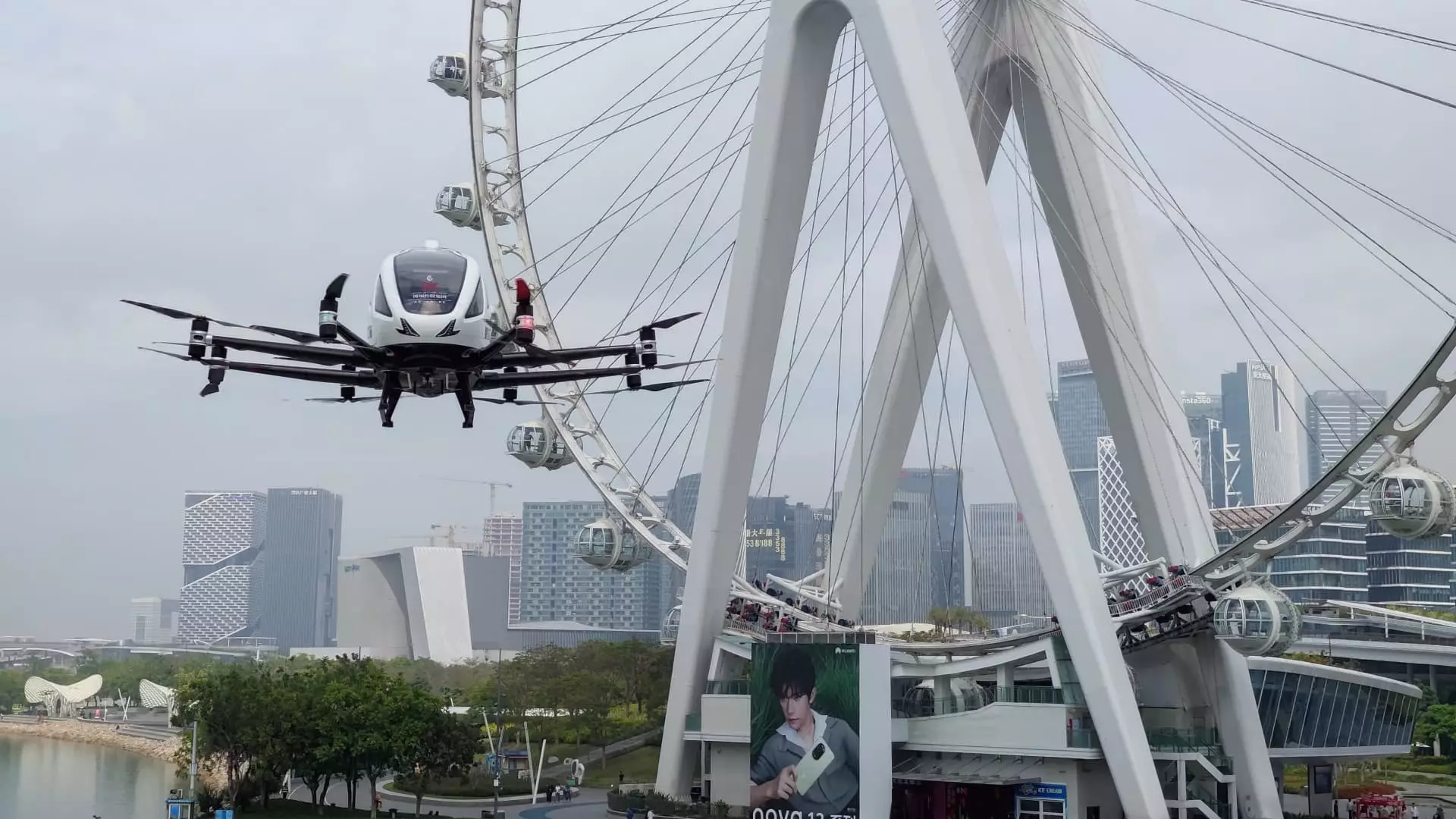In a world hungry for innovation, Ehang, a Chinese startup, has snatched the spotlight by becoming the first company to achieve certification for its eVTOL aircraft—an electric vehicle designed for vertical takeoff and landing that can carry passengers—albeit with a few caveats. While many competitors have ambitious goals, the approval from China’s aviation regulator seems more like a defining moment than a mere accolade. It raises questions about the potential for Ehang’s sustainable growth in a rapidly transforming industry. With upcoming flights beginning by June, one can’t help but wonder if this will spark a revolution in urban transport or if it’s simply a fluke fueled by national interest.
For a nation that seems to have the winds of fortune favoring its technological ambitions, Ehang is poised to benefit dramatically from local policymaking. The Chinese government views the low-altitude economy as a strategic imperative for its economic future, which makes investing in localized aerial transport seem practically obligatory. This is less about pure capitalism and more about state-directed ambition. However, there’s a danger in assuming that government support equates to sustained success in a competitive global market.
Investment Dynamics: The Numbers Game
Ehang currently holds a commanding position in its local market, backed by optimistic projections from Bank of America, which puts substantial weight on the idea that the company will maintain its dominance until at least 2027. These predictions escalate to ambitious delivery targets, estimating up to 813 units next year. Does this growth trajectory translate into substantial returns for investors, or is it merely a house of cards waiting for the inevitable financial winds of change?
The reality is that the aviation sector has its very own set of hurdles in terms of regulatory approvals and public acceptance. A 36% price target increase on Ehang’s stock shows confidence, yet it should serve as a double-edged sword for investors. It’s an enticing prospect, but reliance on government backing might hide inherent vulnerabilities related to market volatility, especially in such an emergent sector.
The Competition Landscape: More Than Just Rivals
Examining the competitive landscape reveals a convoluted web of players, including U.S.-centred contenders like Joby Aviation and Archer Aviation, both chasing after a slice of the eVTOL pie. While Joby’s shares have faced setbacks this year, Archer has found upward momentum—this juxtaposition demonstrates a volatile market that could easily redefine itself from one quarter to the next.
Given the complexities of aviation regulations, Ehang’s ascent does not spell doom for its competitors but rather sets a stringent benchmark that others must grapple with. The landscape becomes even more chaotic when considering how entities leverage brand reputation and consumer trust in response to flight safety—any slip-up for Ehang could spell disaster, not just for its own reputation but also for the entire eVTOL market.
The Future: Urban Air Taxis and Beyond
While Ehang is currently reveling in the predictive glory focused on tourism, analysts also point toward the burgeoning concept of urban air taxis set to revolutionize public transport. But 2035 feels like an eternity in the fast-paced world of technology. How many companies will pivot towards a new business model designed to meet consumer needs by then, and how many will fall by the wayside in the cutthroat race for market share?
Ehang’s prospects may show promise, but with a target market consisting of 200,000 eVTOLs, the question is whether the public is prepared to take to the skies instead of the roads. Public opinion often sways decisions far more than the best of business models. Investors, therefore, should keep a cautious eye—not just on numbers but on consumer sentiments, which have the power to reshape the trajectory of Ehang and its rivals alike.
The Role of Safety and Trust
Investors must also grapple with a significantly pressing concern: safety. With eVTOL aircraft still in their infancy, any negative incidents can have ripple effects across the entire industry. Legal entanglements and red flags over passenger safety could shift consumer attitudes from enthusiasm to skepticism overnight. Therefore, Ehang’s ability to sustain its flight path may ultimately hinge less on production numbers and more on a public assurance of safety.
The stakes are decidedly high. In a market rife with unpredictable elements, Ehang’s journey will serve as a litmus test not only for the company itself but also for the potential winds of change across the aviation industry. Its success would affirm the viability of eVTOL aircraft, while any misstep could set the entire sector back by years. In many ways, Ehang stands at both the precipice of innovation and the edge of public trust. For those observing from the sidelines, that makes it a riveting spectacle.

